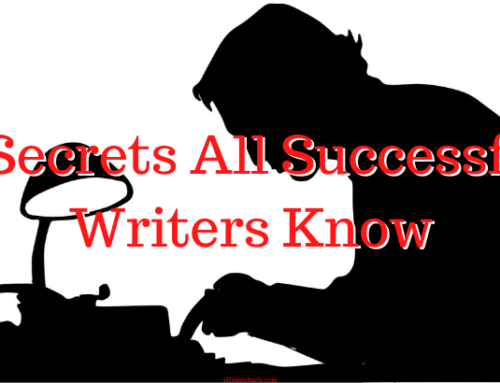Before I started writing professionally and actively studying the craft, I was oblivious to all sorts of things that jump out at me now. Like most avid readers, I cracked open one book after the next out of the sheer enjoyment of it. I didn’t care about plot structure, character development, world building, or thematic congruency. All I cared about was getting sucked into a story that had relatable characters and lots of action.
But if you want to be a (good) writer, you need to pay attention to these things. It’s necessary to understand the time-tested elements that have made up stories for hundreds of years. And one of the best ways to do this is by changing the way you read. You can still enjoy what you’re reading, but you also have to pay attention to things you might not have before.
In this post, I’m going to talk about reading like a writer. I’ll go over some of the changes I’ve made to the way I read that you can, too. Maybe you’re already doing some of these things. If you are, you’ve got an advantage over me. Before I started studying the craft of writing fiction, I was largely unaware of all of the things talked about in this post.
Reading Like A Writer
Table of Contents
If you want to be a writer, you have to read like one. That doesn’t mean you can’t still enjoy what you read. But you have to be on the lookout for things you might not have noticed otherwise.
Maybe some of these things you do already recognize. I’m sure most of you notice at least a couple of them. But how about all of them? I guarantee the Steven Kings, JK Rowlings, James Pattersons, and Debbie Macombers of the world do. There’s no question about it. These master storytellers, whether you like their work personally or not, understand everything we’re about to go over inside and out.
Some professional writers I’ve talked to like to read (fiction) books twice: once to just enjoy the story and once to look for all these craft elements. That’s one way of doing it. Personally, I’ve trained my brain to look for these things the first time around while also doing my best to enjoy the story. Like so many things in the writing world, it’s all about figuring out what works for you.
So let’s get to it! Here are some of the things to start looking for in the books you read.
What To Look For While Reading
1. Plot
 Of all the things you should be looking for as a writer, this one is probably the easiest. Plot, to put it simply, is what happens in a story. It’s the sequence of cause-and-effect events that move the story from beginning to middle to the end.
Of all the things you should be looking for as a writer, this one is probably the easiest. Plot, to put it simply, is what happens in a story. It’s the sequence of cause-and-effect events that move the story from beginning to middle to the end.
There have been countless books, articles, and blog posts written about plot. Some say there are only a few types of plot while others claim there are as many as 1,462 basic plot types. I, personally, like Christopher Booker’s book The Seven Basic Plots. The seven plots that he talks about are:
- Overcoming the Monster – The protagonist sets out to destroy a monster.
- Rags to Riches – The poor protagonist becomes wealthy and/or powerful and grows as a person.
- The Quest – The protagonist sets out on a quest to accomplish a specific goal.
- Voyage and Return – The protagonist goes to a strange land and comes back changed.
- Comedy – Light and humorous characters face adversity resulting in a happy ending.
- Tragedy – The protagonist is flawed or makes a mistake that results in an unfortunate end.
- Rebirth – Some event forces the protagonist to change their ways and become a better person.
You’re probably already aware of the plot in the stories you read. But where do they fit into this list? If the last book you read was in the romance genre, it likely followed a Comedy plot. If your last book was in the fantasy genre, there’s a good chance it had an Overcoming the Monster or The Quest plot.
Speaking of genre, that brings us to the next thing you should be looking for when you read.
2. Genre
This is another one that you’re probably already aware of. Genre is the category that a story falls under. Examples of popular fiction genres include fantasy, science fiction, romance, thriller, mystery, western, erotica. Some common non-fiction genres include biography, memoir, and true crime.
 Of all the things you should be looking for when you read, this one is probably the most obvious. It shouldn’t be very hard to figure out what genre a book is in. If the story is about two people falling in love, it’s in the romance genre. If it’s about two people have all kinds of crazy sex, it’s in the erotica genre. Wizard and warriors? Fantasy. Light sabers and teleportation devices? Science fiction.
Of all the things you should be looking for when you read, this one is probably the most obvious. It shouldn’t be very hard to figure out what genre a book is in. If the story is about two people falling in love, it’s in the romance genre. If it’s about two people have all kinds of crazy sex, it’s in the erotica genre. Wizard and warriors? Fantasy. Light sabers and teleportation devices? Science fiction.
You get the idea. The genre of a book is usually pretty easy to figure out. If it’s an actual physical copy, the genre is usually written somewhere on either the back cover or the inside flap. Knowing what genre a book is in will help you to figure out what genre(s) you will write in.
It’s obviously important to read widely within the genre(s) you write in. But it’s just as important to read outside your genre(s). Fiction, non-fiction, contemporary, historical – read it all. If you want some non-fiction suggestions, here are some great writing-related books: 10 Books Every Writer Should Read.
3. Beats
No, I’m not talking about the sweet new set of Beats headphones you overpaid for. In the context of fiction, beats are basically small units of action. They can be as short as a single sentence or as long as several paragraphs.

All genres have certain beats that readers, whether they’re consciously aware of it or not, want to happen. Take the romance genre, for example. One of the beats that has to happen early in the book is called the “meet cute.” This is the scene where the couple that ends up together in the end meet for the first time. Another romance beat that you’ll find in just about every story is the HEA or Happily Ever After. All romance novels have to end with the couple resolving all their conflicts.
It’s important to learn the beats of whatever genre you’re writing in because if you miss one, readers can be very unforgiving. Let’s stick with our romance example. If you write a romance novel and it doesn’t end in a HEA, get read for a ton of angry one-star reviews. Romance readers expect their stories to wrap up neatly with a happy ending. That’s why a lot of romance authors put “Contains a guaranteed Happily Ever After” at the bottom of their book descriptions.
All genres and plot structures have their beats. If you read a lot of books in the same genre, start looking for common events, no matter how seemingly insignificant, that pop up in every book. Those are the beats of that genre.
4. Character Arcs
Arcs are storylines that take place over the course of a book or series. Character arcs are the storylines of one or more characters. In just about all fiction (and most non-fiction), the main character at the end of the book is different than they were at the beginning. The transformation or inner journey that the main character goes through is called a character arc.

Let’s take a Quest plot in the fantasy genre, for example. The protagonist starts out as a scared weakling. Against his will, he’s forced to go on an epic quest to slay a dragon. Over the course of the story, he gradually gains confidence and strength. Then, he finally defeats the dragon. This transformation from scared weakling to confident hero is the protagonist’s character arc.
All character arcs involve some sort of transformation. Sometimes it’s just an inner transformation. But it’s often both inner and outer transformations. The protagonist not only learns a valuable lesson and becomes a better person, s/he gains wealth, improves his/her body, or transforms their life in some other external way.
In most fiction, the protagonist yearns for something at the beginning. Maybe s/he wants to fit in, maybe s/he wants fame and fortune, or maybe it’s any of a million other things. Once you identify this, it’s easy to follow his/her character arc. Quite often, the protagonist’s character arc has a lot to do with the next thing on our list.
5. Theme

As you already know, plot is what happens in a story. Theme, on the other hand, is what the story is about. Before I started studying the craft of writing fiction, like many people, I thought that these two were basically the same thing. However, I now know that they are not.
The theme of a story is its underlying message. Sometimes the theme is incredibly obvious. In George Orwell’s 1984, for example, the theme is clearly about government control and privacy. In other stories, the them may be less obvious.
Some stories have several themes. A good example of this is the Harry Potter series. Friendship, death/mortality, and good vs evil are all themes that can be found in Harry Potter.
Theme is something that I’ve always been aware of in the books I’ve read, though often only on a subconscious level. But now, it’s something that I consciously look for. Sometimes the theme is obvious from page one onward and sometimes it takes a little while to see – but it’s always there.
6. POV

Here’s another one that becomes incredibly obvious when you learn to look for it, but most readers never seem to notice. Once again, I was one of those readers. But now, the POV of a book jumps out at me on page one.
POV is short for Point Of View. It’s whose POV the story is being told from. Is the main character telling the story? A third-party observer? Someone else? There are 3 POVs that stories are written in:
- First Person POV – This is when the main character is telling the story. S/he uses words like “I,” “me,” and “we.” This style of writing has become incredibly popular over the past decades. But it has its limitations. If the main character is telling the story, then you can only know what the main character knows.
- Second Person POV – This is by far the least common of the three POV types. Second person POV uses words like “you” and “your.” It’s rarely seen in fiction. The only fiction I can think of that use second-person POV are Choose Your Own Adventure books where you, the reader, is the main character.
- Third Person POV – This had traditionally been the most commonly-used POV. In third person POV, a narrator is telling the story. It uses words like “he,” “she,” and “they.” Sometimes this POV is limited to just one character’s experience (known as third person limited) and sometimes the narrator knows all “third person omniscient).
7. Tense
This is another one that I was largely oblivious to until I started looking for it. Now, like the POV a book is written in, the tense jumps out at me on page one, too. The tense of a book is when it took, is taking, or will take place. There are three tenses that a story can be written in: past, present, and future.
 If the story took place in the past, it’s written in past tense. It uses phrases like “she said,” “he went,” and “they returned.” Past tense is the most commonly used tense in fiction.
If the story took place in the past, it’s written in past tense. It uses phrases like “she said,” “he went,” and “they returned.” Past tense is the most commonly used tense in fiction.
Present tense has become a lot more popular in recent years than it had been in the past. When writing in present tense, the action is happening now. It uses phrases like “he says,” “she walks,” and “they run.”
Future tense is the least common of the three. As you might imagine, stories written in future tense happen in the future. It uses phrases like “she’ll say,” “if he goes,” and “they will see.”
8. Conflict
Stories are about conflict. Will he be able to defeat the dragon? Will they resolve their issues and get together like the perfect couple everyone knows they could be? Will she make it out alive so she can testify against the ones who framed her?

All stories need conflict.
A story without conflict is not a story at all. This is something I’m trying to improve in my writing. I don’t like conflict and drama in my personal life, so writing it doesn’t come naturally to me. But now that I look for it in the stories I read, I understand its appeal and its importance.
All the bestselling novels of today are overflowing with conflict. It seems like there’s a new problem popping up on every page, a new obstacle to overcome, a new challenge to rise up to. That’s what readers want. They want non-stop action.
Most of us don’t like too much conflict in our own lives. But in fiction, we can’t get enough of it. Conflict in fiction allows us to imagine what we might do in a similar situation without actually having to deal with the consequences. In general, the more conflict a book has, the more it sucks the reader in.
You probably don’t want to invite any unnecessary conflict into your life. But here are some hobbies you could take up that will improve your writing in general and conflict in particular: 10 Hobbies That Will Make You A Better Writer.
9. Cliffhangers
I’m not talking about cliffhangers at the end of a book. Unless it’s part of a series, readers hate cliffhangers at the end of a story, myself included. We like all our questions to be answered and everything to be wrapped up neatly. Two TV shows that I really liked come to mind: The Lost World and Siberia. Though not books, they illustrate my point. Both shows were both canceled after a season-ending cliffhanger. To this day, it still irks me when I think about them. I want to know what happened to Veronica, Lord John Roxton, Marguerite, and Professor Challenger, damn it!
A cliffhanger is an ending that leaves you in suspense. But they’re not just found at the end of stories in a series or at the end of standalone novels written by authors who love getting one-star reviews. Cliffhangers can also be at the end of book chapters.

Have you ever been up reading much later than you know you should be and you tell yourself, “One more chapter, then I’m going to bed?” Then, you get to the end of that chapter and it leaves you just dying to know what happens next so badly that you can’t stop yourself from starting the next one? Yeah? So have I, plenty of times. And so have countless others.
That’s because skilled authors end most or all of their chapters with a cliffhanger. Maybe your beloved protagonist is hanging from a ledge about to fall or the guy and girl who’ve been going back and forth for the last two-hundred pages are about to finally kiss. These cliffhangers work and skilled writers know this. They ensure that their readers stay interested and keep the pages turning.
Conclusion
Before I started studying writing, I rarely picked up on any of the things mentioned above. But now, when I read, I’m always looking for them. Maybe you’re already aware of a few of these things when you read. If so, you’re in better shape than I was when I started my writing journey.
These are just nine things that writers should look for when reading, but there are many others. However, these are probably the most important for new writers to learn to look for. For me, learning to spot these nine things in the books I read has helped my writing immensely.
I’d love to hear about the experiences of other writers on this subject, whether a bestselling author or someone just starting out. How many of these nine things were you able to spot before you started studying writing? What about now? Please leave your answers in the comments section at the bottom.
Join the Ellis Michaels mailing list to be the first to know about new writing articles and resources, tips for aspiring authors and writers just getting started, and a lot more.
[This article was originally published on September 27, 2019. Updated September 1, 2021.]







Leave a Reply